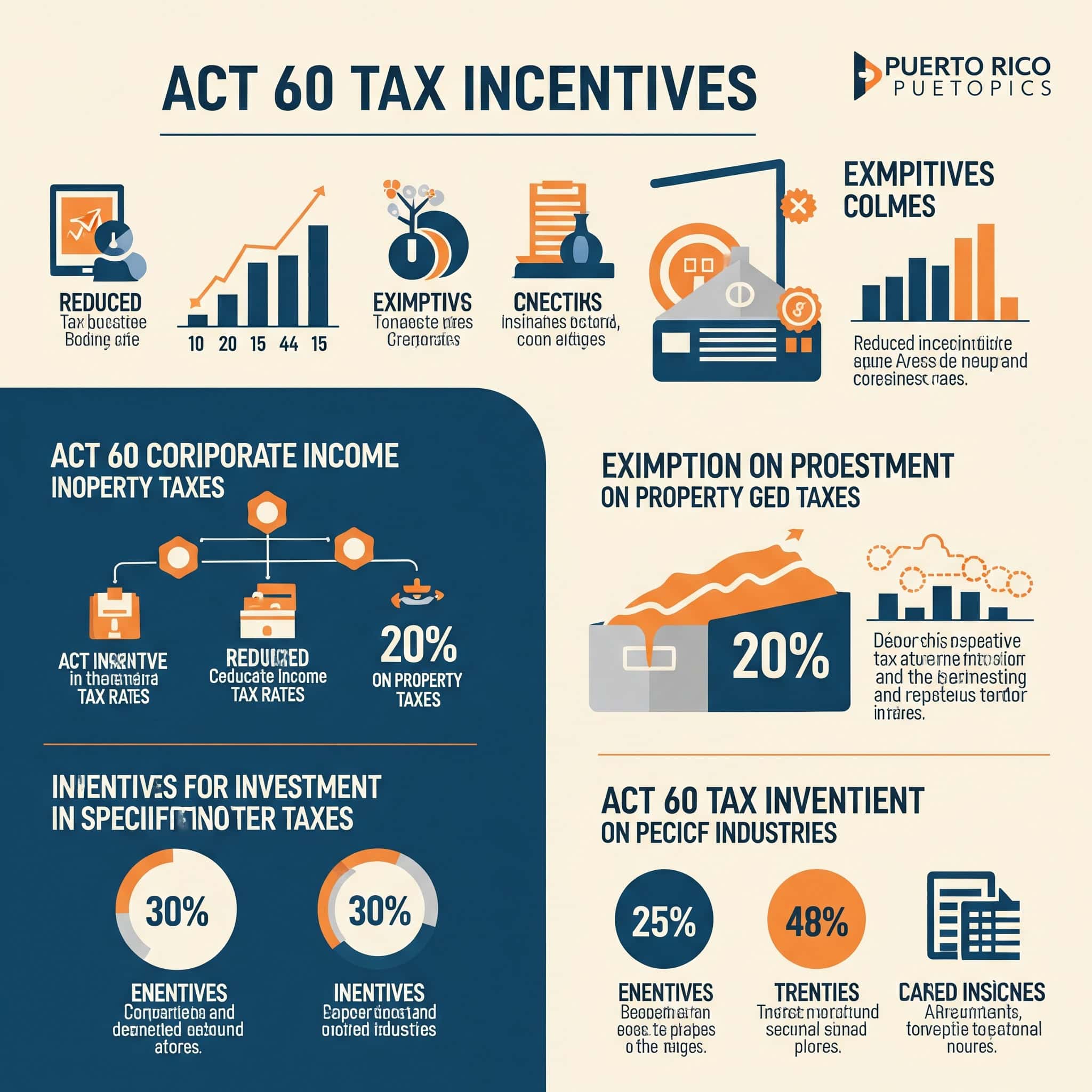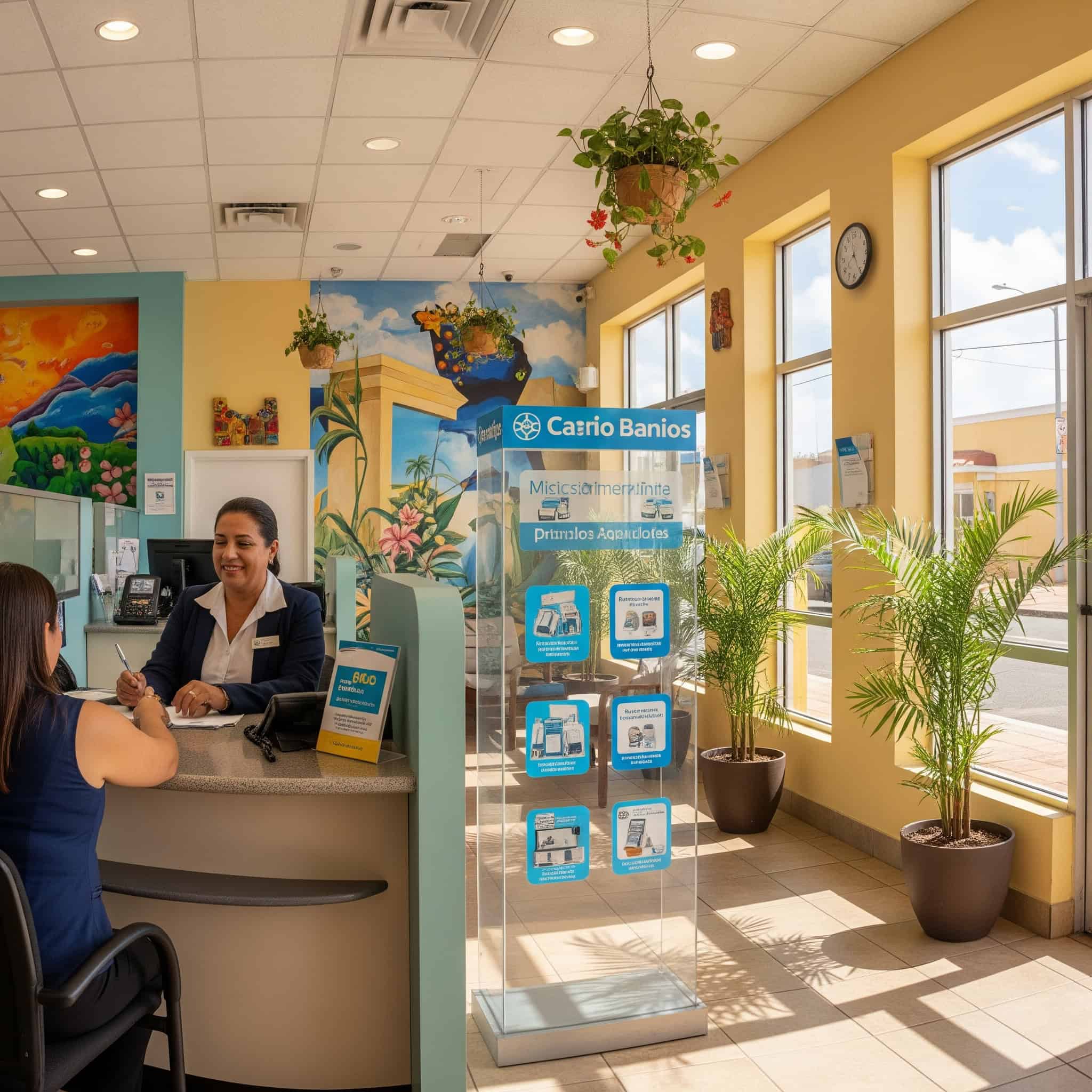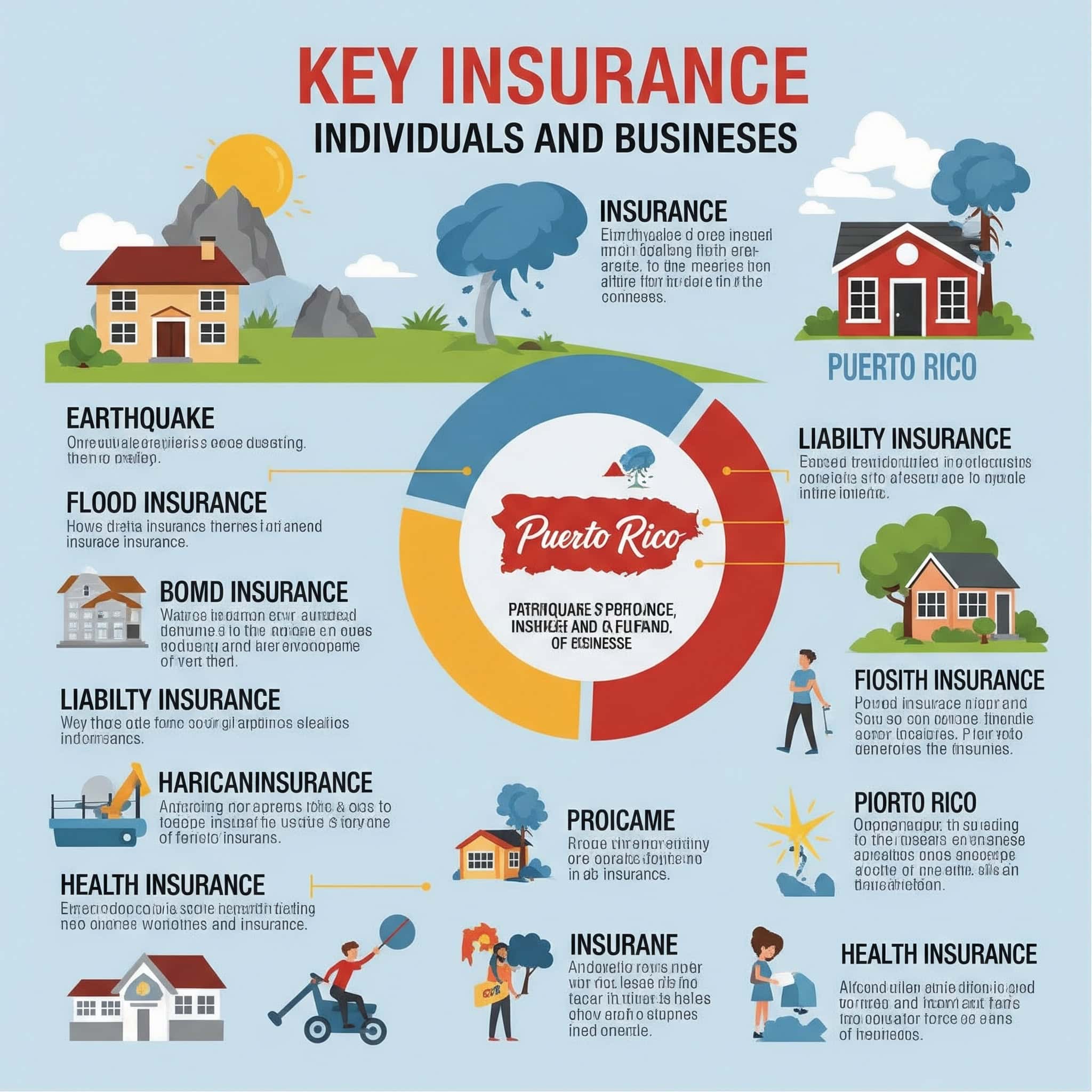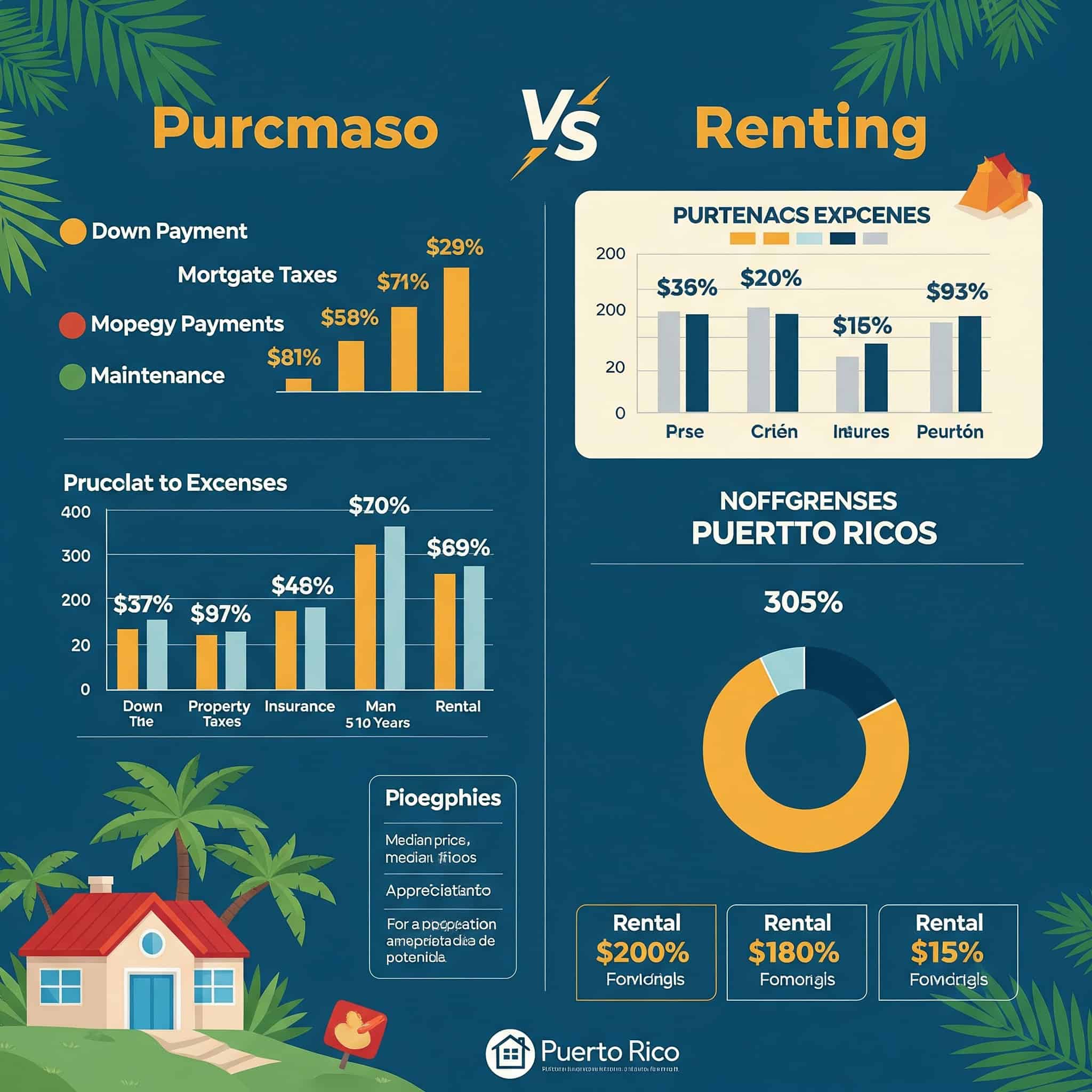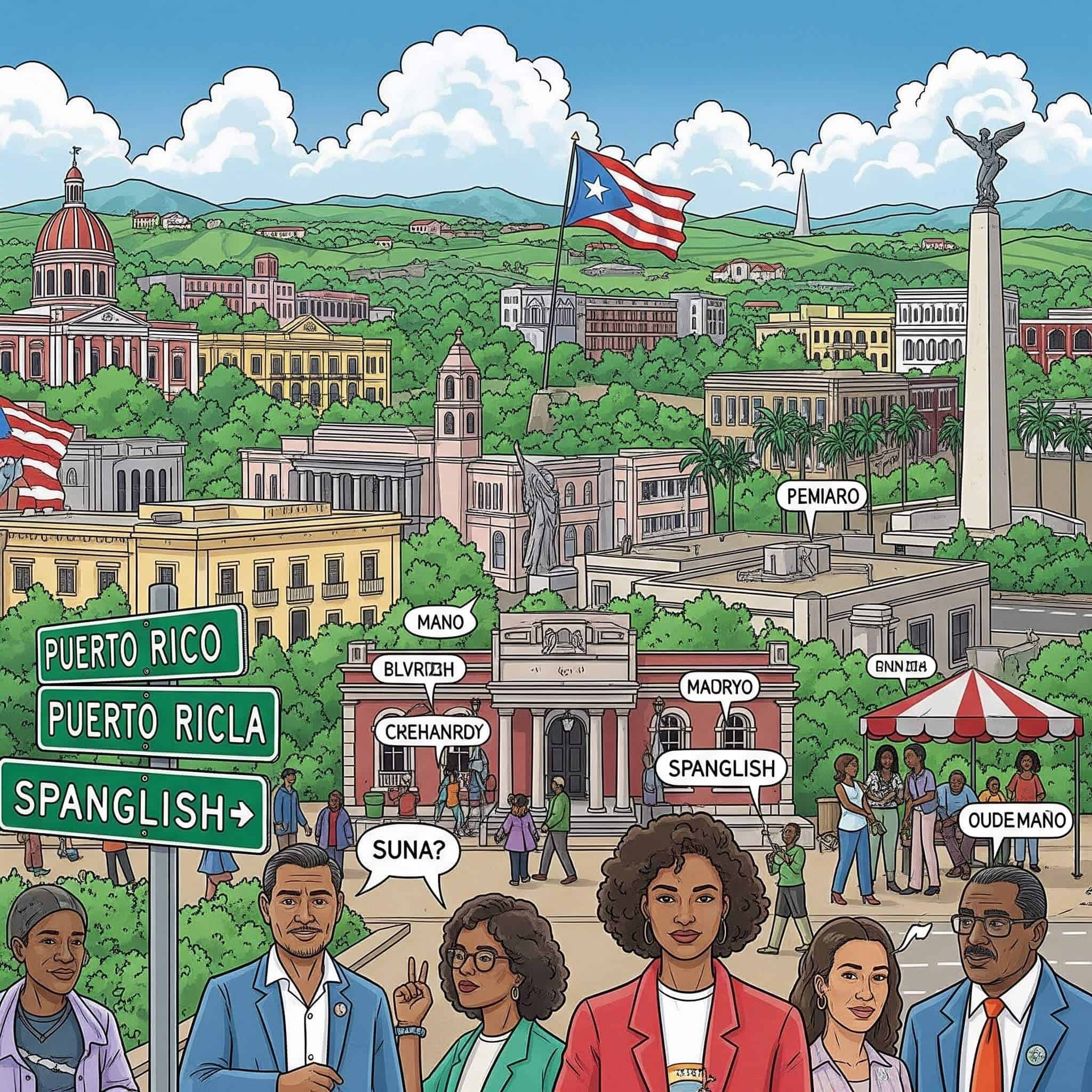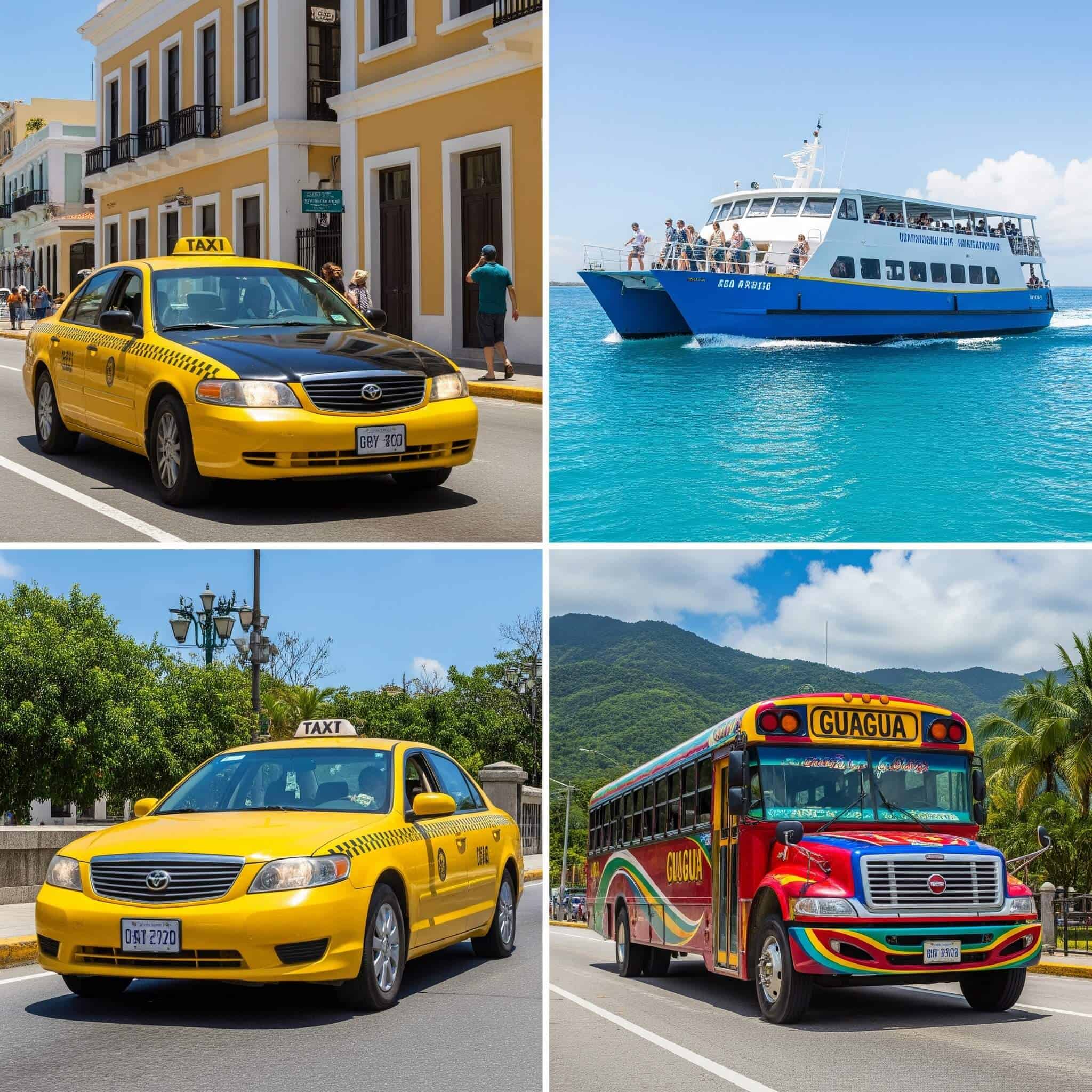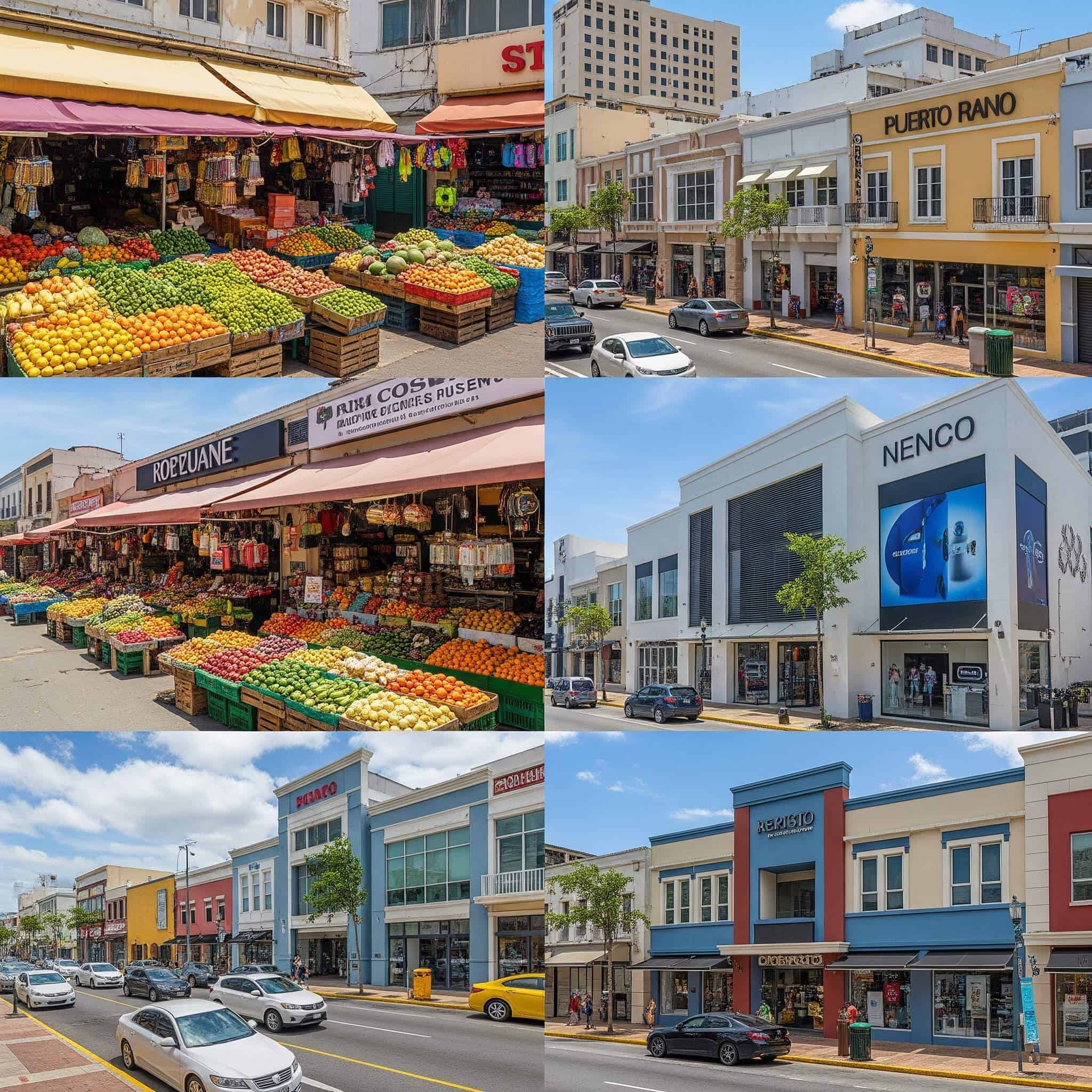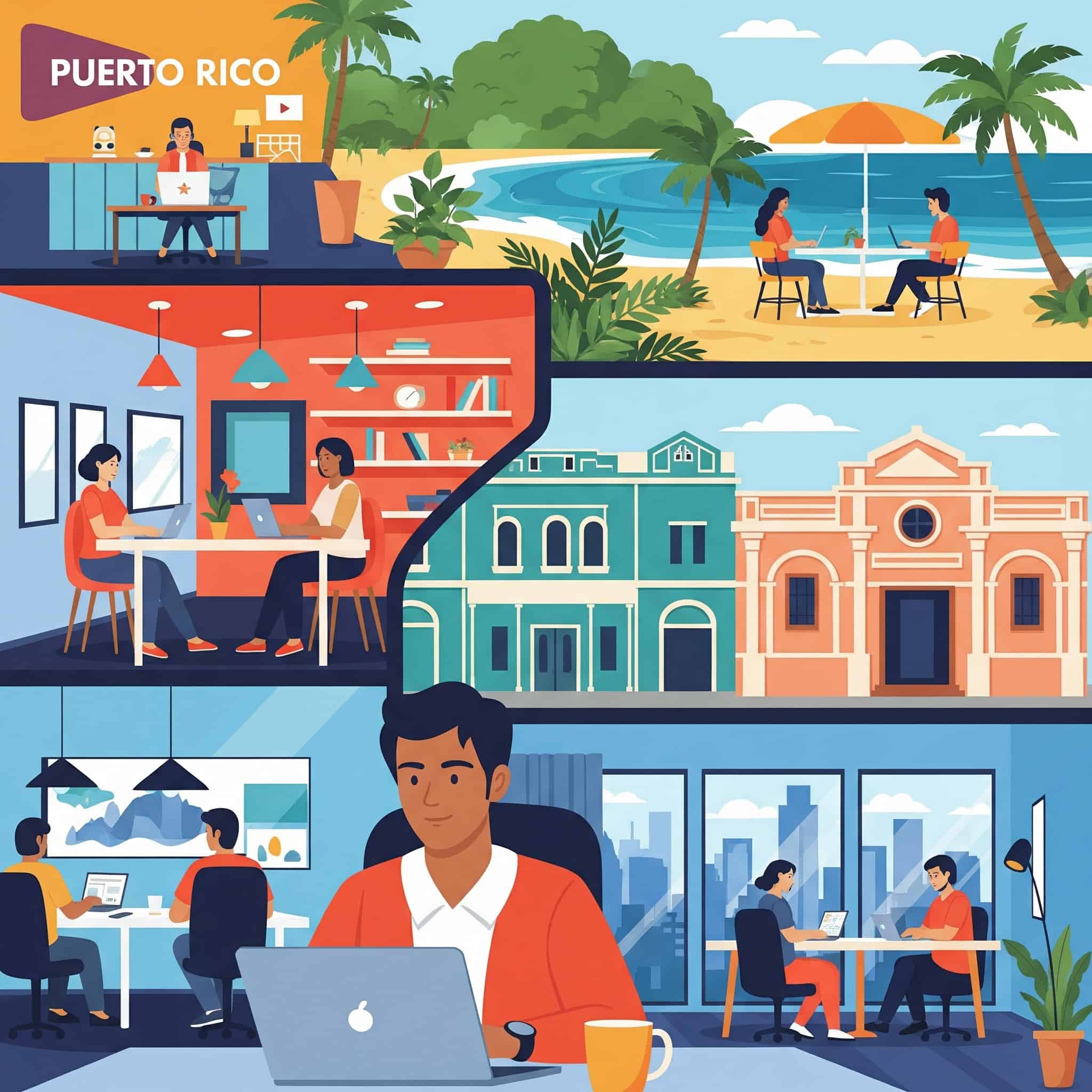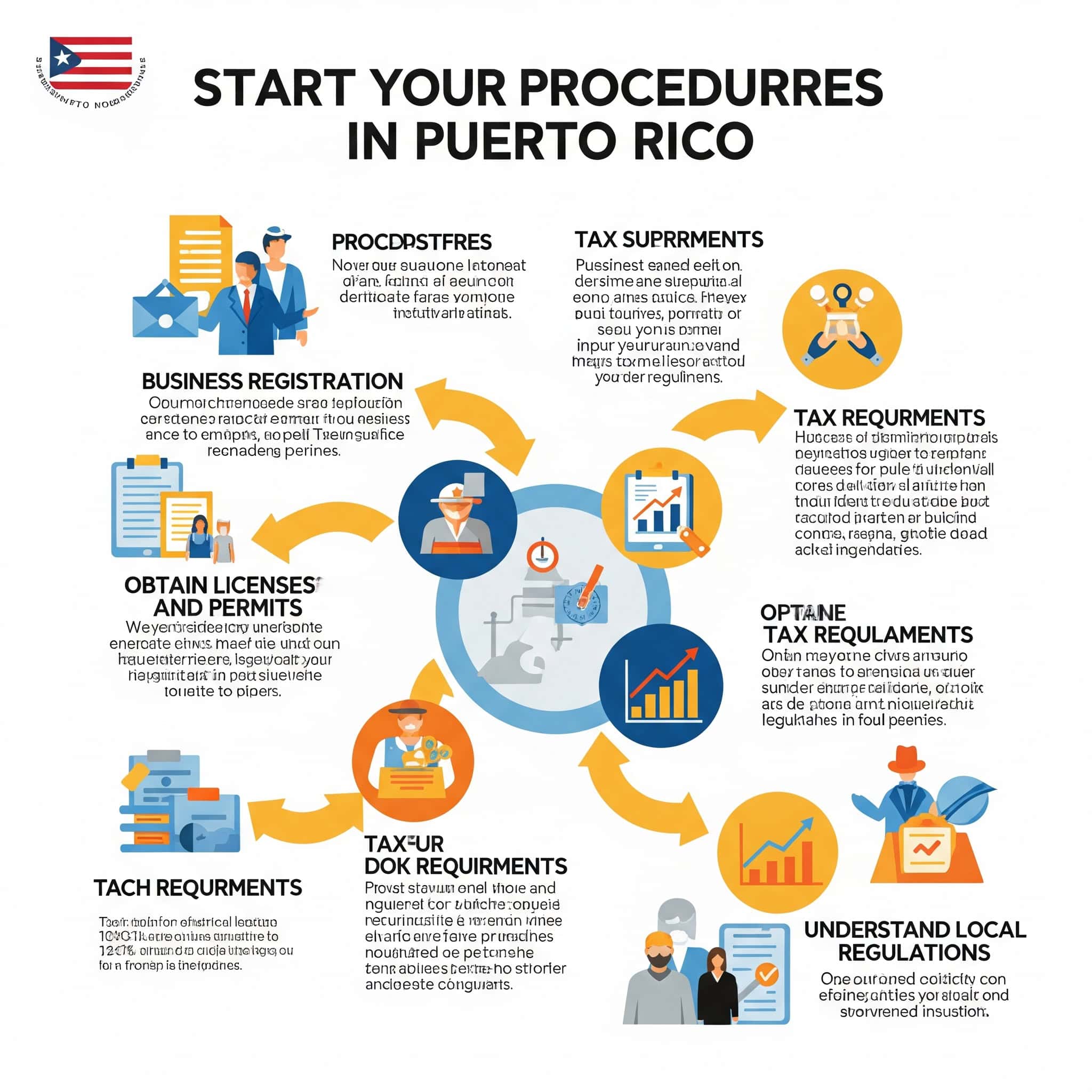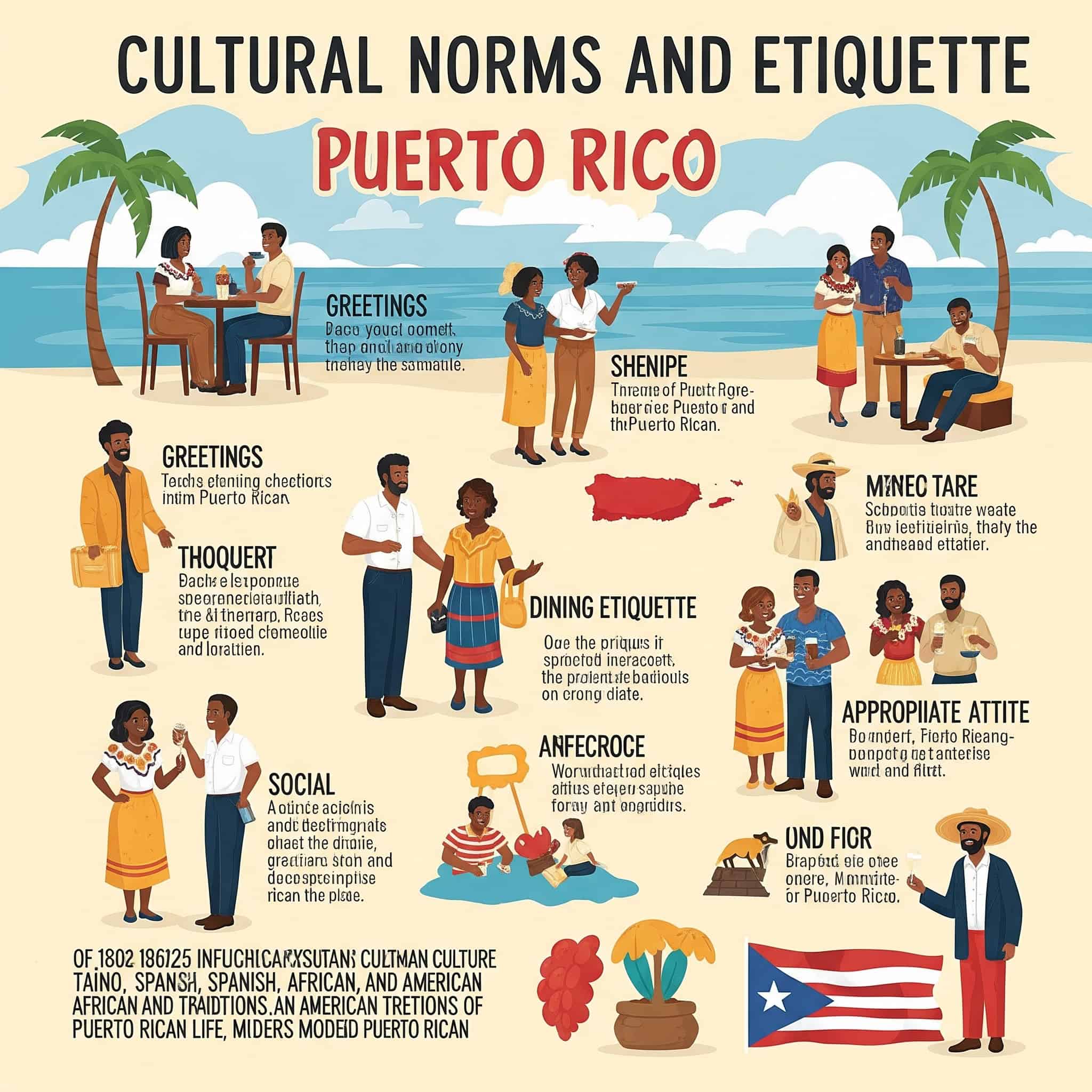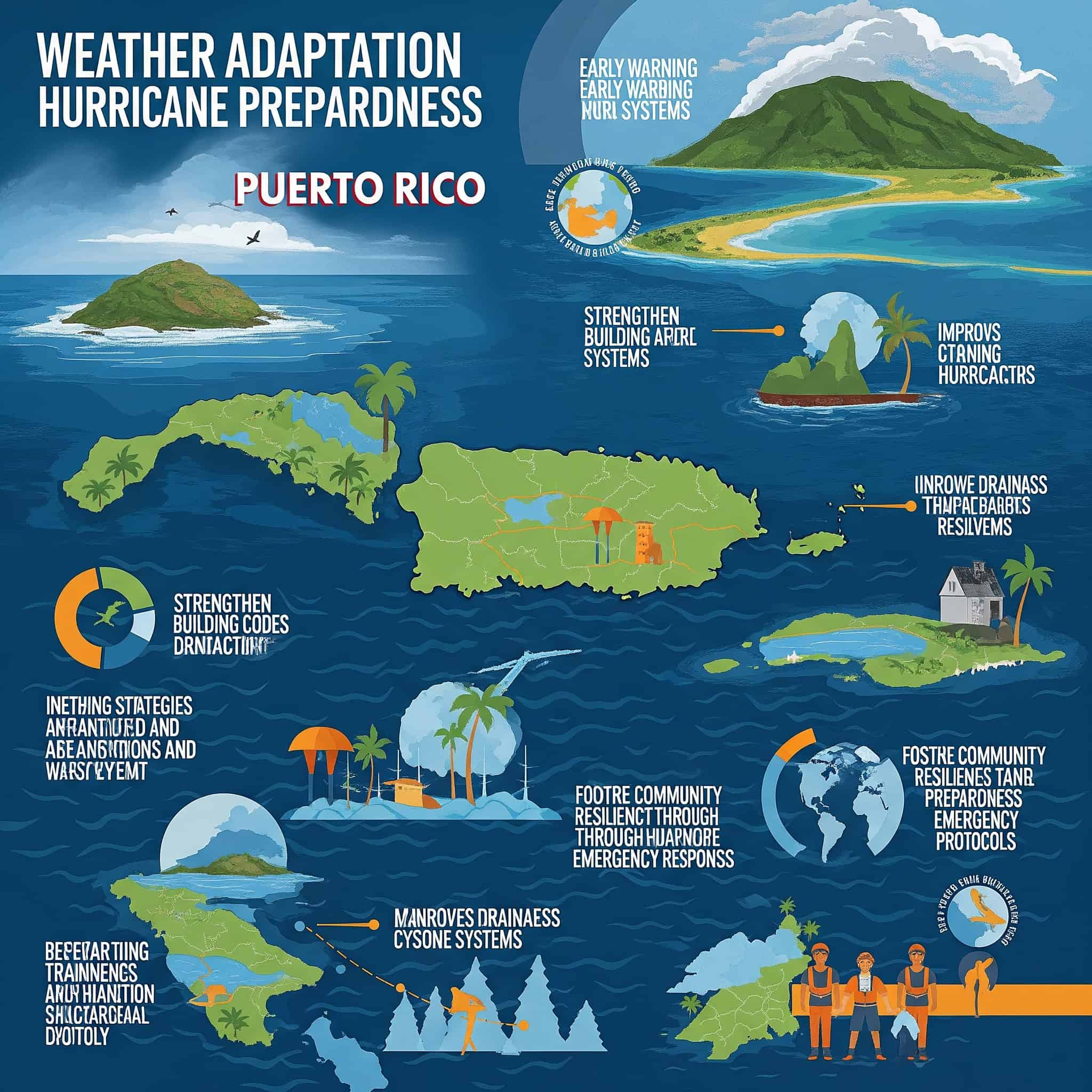25 Essential Considerations When Moving to Puerto Rico from the US: Your Complete Guide
Moving to Puerto Rico has become increasingly popular among US mainlanders, with over 44,000 Americans relocating to the island between 2017 and 2019. I remember talking with countless families who made this transition, each with their unique challenges and triumphs. Whether you’re seeking tax advantages, a change of lifestyle, or simply a new adventure, this comprehensive guide will help you navigate the complexities of relocating to this beautiful Caribbean island.
Table of Contents
Legal and Financial Considerations
Act 60 Tax Incentives
Residency Requirements
Banking Setup
US Mainland vs. Puerto Rico Taxation
Insurance Considerations
Estate Planning Adjustments
Housing and Location
Real Estate Purchase vs. Rental
Popular Expat Areas
Urban vs. Coastal Living
Property Insurance Requirements
Utility Setup and Reliability
Daily Living Adjustments
Language Adaptation
Transportation Options
Healthcare Access
Education Options for Families
Shopping and Consumer Goods Availability
Internet and Communication Services
Employment and Business
Remote Work Feasibility
Local Employment Opportunities
Business Startup Procedures
Professional License Transfers
Cultural and Social Integration
Community Integration Strategies
Cultural Norms and Etiquette
Recreation and Social Activities
Weather Adaptation and Hurricane Preparedness
How Jiffy Junk Can Help With Your Move
Final Thoughts
Legal and Financial Considerations
1. Act 60 Tax Incentives
Act 60 offers substantial tax benefits for those relocating to Puerto Rico, including a 4% corporate tax rate for export service businesses and 0% tax on capital gains. To qualify, you must become a bona fide resident, live in Puerto Rico for at least 183 days yearly, and establish your main home on the island. These incentives often serve as the primary motivation for many professionals and business owners making the move to Puerto Rico.
The Act 60 program consolidated previous tax incentive programs (Acts 20/22) into a comprehensive framework designed to attract investment and human capital to Puerto Rico. This isn’t just a simple tax break – it’s a complete restructuring of your tax obligations that requires careful planning and execution.
Qualifying individuals must file Form 8898 with the IRS to notify the federal government of their change in residency status. I’ve seen several cases where failure to meet the requirements resulted in significant tax penalties and disqualification from the program. Don’t take shortcuts with documentation – the savings are substantial, but so are the potential penalties.
Act 60 Tax Benefit | Mainland Rate | Puerto Rico Rate | Requirements |
|---|---|---|---|
Income Tax (Export Services) | Up to 37% | 4% | Bona fide residency, export services business |
Capital Gains | Up to 20% | 0% on gains after moving | Assets must be acquired after establishing residency |
Dividend Tax | Up to 20% | 0% | Must be Puerto Rico sourced income |
Interest Income | Up to 37% | 0% | Must be Puerto Rico sourced income |
2. Residency Requirements
Establishing bona fide residency in Puerto Rico requires physical presence for at least 183 days per year, making the island your primary home, and demonstrating significant connections to Puerto Rico while minimizing ties to other locations. This status is crucial for tax benefits and must be maintained diligently to avoid complications with both Puerto Rican and US federal authorities.
The IRS applies a three-part test to determine bona fide residency: physical presence, tax home, and closer connection tests. Each aspect requires specific documentation that you should maintain meticulously. I’ve worked with many relocators who created dedicated filing systems just for their residency proof – a practice I highly recommend.
Puerto Rico residency is monitored through various means including credit card usage patterns, travel records, and utility bills. Regular audits are conducted to verify compliance, and the scrutiny can be intense. Your digital footprint tells a story about where you actually live, so be mindful of how your activities might be interpreted by tax authorities.
John, a software consultant from California, moved to Puerto Rico in 2019 seeking Act 60 benefits. He maintained meticulous documentation of his presence on the island, including flight records, utility bills, and local bank statements. During an IRS audit in 2021, he was able to successfully demonstrate his bona fide residency by showing his active membership in local community organizations, Puerto Rican driver’s license, voter registration, and consistent physical presence of 300+ days per year. His preparation paid off when the audit concluded with confirmation of his residency status, preserving his tax benefits worth over $85,000 annually.
3. Banking Setup
You’ll need to establish local banking relationships in Puerto Rico. Popular options include Banco Popular, FirstBank, and Santander. Many mainland US banks have limited presence on the island, so plan to open accounts before fully transitioning. Banking procedures may differ from what you’re accustomed to on the mainland, requiring patience during the setup process.
Puerto Rican banks often require in-person visits with extensive documentation including tax returns, reference letters, and proof of address that must be physically presented rather than submitted online. The process can take weeks rather than the days you might expect based on mainland banking experiences. I recommend starting this process during an exploratory visit before your actual move.
International wire transfers between mainland and Puerto Rican accounts typically incur higher fees and longer processing times than domestic transfers, despite Puerto Rico being a US territory. This quirk of the banking system catches many newcomers by surprise. Plan for 3-5 business days for transfers to clear, and budget for wire fees that can range from $25-45 per transaction.
4. US Mainland vs. Puerto Rico Taxation
While living in Puerto Rico, you’ll file both US federal and Puerto Rico tax returns. Income sourced from Puerto Rico is generally taxed only by Puerto Rico, while US-sourced income remains subject to federal taxation. This dual system requires careful planning and possibly professional assistance to navigate properly and maximize benefits.
Puerto Rico-sourced income is reported on Form 1040-PR or Form 1040-SS, while US-sourced income must be reported on the standard Form 1040. This creates a complex filing situation requiring specialized tax knowledge. Most tax software programs don’t adequately handle this dual filing requirement, making professional assistance almost essential.
The concept of income sourcing becomes critical, with specific IRS regulations determining whether income is considered Puerto Rican or US-sourced based on factors including where services are performed and where capital is deployed. I’ve seen many newcomers struggle with this distinction, particularly for investment income and digital services. Working with a tax professional who understands both systems is worth every penny.
If you’re concerned about managing your mainland assets while moving to Puerto Rico, consider how Jiffy Junk’s estate cleanout services can help you organize and dispose of items you won’t be taking with you.
5. Insurance Considerations
Relocating to Puerto Rico requires securing new insurance policies, including health insurance (private or through the government’s plan), homeowner’s/renter’s insurance with hurricane coverage, and potentially higher auto insurance rates. Insurance costs can be significantly higher than on the mainland due to increased risk factors, particularly for property coverage.
Hurricane insurance in Puerto Rico typically carries deductibles calculated as percentages of the property value (often 2-5%) rather than fixed amounts. This can result in substantial out-of-pocket costs during claims. For a $300,000 home, a 2% hurricane deductible means you’re responsible for the first $6,000 in damages – a significant amount that should be factored into your emergency fund planning.
The National Flood Insurance Program operates differently in Puerto Rico, with flood zone designations that may not reflect post-hurricane landscape changes. This often necessitates additional private coverage for comprehensive protection. I recommend working with an insurance broker who specializes in Puerto Rico policies to ensure you have appropriate coverage without gaps or overlaps.
6. Estate Planning Adjustments
Your existing wills, trusts, and other estate planning documents may need updating to comply with Puerto Rico’s legal system, which is based on civil law rather than common law. This fundamental difference affects how assets are transferred and protected, making consultation with a Puerto Rico-based attorney essential for proper estate planning.
Puerto Rico’s forced heirship laws (“legitima”) restrict how much of your estate can be freely distributed, potentially overriding provisions in wills created under mainland US law regardless of your intentions. These restrictions can be particularly problematic for blended families or those with specific inheritance wishes that don’t align with Puerto Rico’s default distribution rules.
Powers of attorney executed on the mainland may not be recognized by Puerto Rican institutions without specific language and notarization requirements. This necessitates new documents prepared under local legal standards. I’ve witnessed several difficult situations where families faced medical or financial emergencies only to discover their mainland documents weren’t valid in Puerto Rico. Don’t wait for a crisis to address these important legal matters.
Housing and Location
7. Real Estate Purchase vs. Rental
Renting initially (6-12 months) is advisable to learn different neighborhoods before buying property in Puerto Rico. Property purchases typically involve lower prices than comparable mainland properties but may require all-cash transactions as mortgages can be difficult to secure. This exploration period helps you identify areas that best match your lifestyle needs and preferences.
Puerto Rico’s property registry system (“Registro de la Propiedad”) operates differently than mainland title systems, requiring title searches that can reveal unexpected liens or encumbrances dating back decades. I’ve seen purchases delayed or canceled when previously unknown claims surfaced during the due diligence process. Working with an experienced local real estate attorney is essential, not optional.
Foreign national lending restrictions often apply to mainland Americans despite Puerto Rico’s territorial status. Local banks typically require 30-40% down payments and charge interest rates 1-2% higher than mainland rates. This financing challenge explains why many property transactions on the island are cash deals, particularly in the luxury market. If you’ll need financing, start building banking relationships early and be prepared for a more complex approval process.
8. Popular Expat Areas
San Juan (particularly Condado and Ocean Park), Dorado, Rincón, and Palmas del Mar are popular among mainland transplants. Each area offers different lifestyle benefits, from urban convenience to beachfront living. Your choice will significantly impact your daily experience, access to services, and integration opportunities with both expat and local communities.
Microclimates vary dramatically across Puerto Rico’s regions, with the north coast receiving significantly more rainfall than the south, and elevation differences creating temperature variations of 5-10°F between coastal and mountain areas. This climate diversity means you might need to visit potential areas during different seasons before making a final decision. What feels perfect during a winter visit might be uncomfortably humid during summer months.
Property tax assessments vary by municipality, with some areas offering abatements for renovations while others impose additional fees for infrastructure improvements. These differences create substantial variations in carrying costs that might not be immediately apparent during your initial property search. I recommend researching the specific tax policies of any municipality you’re considering to avoid unexpected expenses after purchase.
Area | Lifestyle | Expat Population | Cost of Living | Infrastructure | Distance from SJU Airport |
|---|---|---|---|---|---|
San Juan (Condado) | Urban, Cosmopolitan | Very High | $$ | Excellent | 15 minutes |
Dorado | Upscale Resort | High | $$ | Very Good | 45 minutes |
Rincón | Laid-back Beach | Medium | $ | Fair | 2.5 hours |
Palmas del Mar | Gated Resort | Medium | $$ | Good | 1 hour |
Humacao | Suburban, Authentic | Low | $ | Fair | 45 minutes |
9. Urban vs. Coastal Living
Urban areas like San Juan offer more amenities and services but at higher costs, while coastal areas provide relaxed lifestyles but may have infrastructure challenges and fewer conveniences. Your decision should balance your priorities regarding lifestyle, access to services, and tolerance for infrastructure limitations.
Urban density in San Juan creates specific challenges including traffic congestion with average commute times of 45+ minutes during peak hours. This contrasts sharply with minimal traffic in coastal communities where a “rush hour” might add only 5-10 minutes to your drive. If you’ll be commuting regularly, factor this time difference into your location decision.
Coastal properties face accelerating erosion rates of up to 3 feet per year in some areas due to climate change. This affects long-term property values and insurance availability in ways not reflected in current market prices. Beachfront might be appealing, but properties set back from the shoreline often represent better long-term investments. I’ve watched several beautiful beachfront properties lose significant portions of their lots over just a few years.
When deciding between urban and coastal areas in Puerto Rico, consider how your lifestyle needs might affect your moving trash removal requirements and plan accordingly for a smoother transition.
10. Property Insurance Requirements
Hurricane insurance is essential but expensive in Puerto Rico. Flood insurance is separate and necessary for many areas. Expect to pay significantly more than comparable mainland coverage due to the island’s vulnerability to natural disasters. These costs must be factored into your housing budget from the beginning.
Insurance policies in Puerto Rico often contain “anti-concurrent causation” clauses that can deny coverage when damage results from multiple causes (such as wind and flooding). This can create coverage gaps that leave you financially exposed during a disaster. Reading and understanding your policy details is crucial – don’t just focus on the premium amount.
Self-insurance through reinforced construction techniques like impact-resistant windows and hurricane straps can reduce premium costs by 15-25% while providing superior protection during storms. These investments often pay for themselves within a few years through insurance savings while also increasing your property’s resale value. When house hunting, look for homes with these features already installed or factor retrofit costs into your purchase decision.
11. Utility Setup and Reliability
Power outages are common in Puerto Rico, making generators or solar power systems practical investments. Water service can be inconsistent in some areas, and internet service varies widely by location. Planning for backup systems is essential rather than optional for maintaining quality of life during infrastructure disruptions.
Puerto Rico’s electrical grid operates at different voltage standards (120/208V) than some mainland areas, requiring voltage regulators for sensitive equipment and specialized installation for solar systems. This technical difference can damage unprotected electronics and appliances. I recommend having an electrician evaluate your home’s power quality and install appropriate protection devices.
Water pressure fluctuations are common throughout the island’s supply system, necessitating pressure regulators and often cistern systems with 500+ gallon capacity to maintain consistent water availability. These systems require regular maintenance but provide peace of mind during service interruptions. The initial investment might seem high, but the first time you have running water while your neighbors don’t, you’ll appreciate the foresight.
After Hurricane Maria, the Martinez family in Humacao installed a comprehensive resilience system for their home that has proven invaluable. Their setup includes a 10kW solar system with 20kWh of battery storage, a 500-gallon water cistern with filtration system, and a backup propane generator. During a recent week-long power outage affecting their neighborhood, they maintained full electricity for essential systems, clean running water, and internet connectivity through their cellular backup. The initial investment of $25,000 has paid for itself through utility savings, avoided hotel stays during outages, and prevention of food spoilage. More importantly, they’ve never had to leave their home during infrastructure failures, maintaining their quality of life regardless of external conditions.
Daily Living Adjustments
12. Language Adaptation
While you can get by with English in tourist areas and for basic transactions, learning Spanish is essential for full integration and handling government services in Puerto Rico, which primarily operate in Spanish. Your language skills will directly impact your ability to navigate daily life, build relationships, and access services effectively.
Puerto Rican Spanish contains unique vocabulary and pronunciation patterns distinct from other Spanish-speaking regions, with approximately 2,000 words and phrases specific to the island. Standard Spanish courses might not prepare you for these local variations. I found that language exchange meetups with locals provided more practical communication skills than formal classes alone.
Government documents and legal proceedings are conducted almost exclusively in Spanish, with certified translation services costing $25-50 per page for official documents. This expense adds up quickly when dealing with property purchases, business licenses, or legal matters. Investing in your Spanish language skills pays dividends both culturally and financially.
13. Transportation Options
Public transportation is limited outside San Juan. Most residents rely on personal vehicles. Ride-sharing services operate in urban areas but are less available in rural regions. Consider shipping your vehicle or purchasing locally based on your location and transportation needs.
Vehicle shipping from the mainland costs $1,000-2,500 depending on size and service level, with transit times of 7-21 days and specific documentation requirements including title verification. This process requires advance planning and coordination with shipping companies that specialize in vehicle transport to Puerto Rico. I’ve found that enclosed shipping offers better protection but costs nearly twice as much as standard roll-on/roll-off service.
Puerto Rico’s vehicle inspection requirements differ from mainland standards, with emissions testing waived but structural and safety inspections conducted annually at government-certified facilities. These inspections focus heavily on lights, brakes, and structural integrity. Older vehicles that passed mainland inspections might fail in Puerto Rico due to different criteria, so budget for potential repairs if bringing an aging vehicle.
14. Healthcare Access
Puerto Rico has both public and private healthcare systems. Many expats use private hospitals and clinics, which offer good care at lower costs than the mainland. Medicare works in Puerto Rico, but Medicare Advantage plans differ. Understanding your healthcare options before arrival helps ensure continuous access to necessary medical services.
Puerto Rico’s medical coding system incorporates both US standards and local modifications, requiring specific insurance plans that recognize these hybrid systems for optimal coverage. This technical difference can result in coverage denials or payment delays if your insurance plan isn’t familiar with Puerto Rico’s healthcare system. I recommend confirming your specific coverage details with your insurance provider before relocating.
Prescription medication availability differs from the mainland, with approximately 15% of common US medications unavailable or requiring special ordering. This necessitates medication planning for chronic conditions. If you take regular medications, I suggest bringing a 90-day supply during your move and researching equivalent alternatives available on the island. Working with a local physician to establish care and medication management should be a priority during your first month.
15. Education Options for Families
International schools, private bilingual schools, and public schools are available in Puerto Rico. Many expat families choose private education, which is generally less expensive than mainland private schools but varies in quality. Educational decisions significantly impact children’s adjustment and should be researched thoroughly before relocation.
Curriculum standards in Puerto Rican schools follow a different framework than US Common Core, with greater emphasis on Spanish language arts and Caribbean history. This requires academic transition planning, especially for older students who might face gaps or overlaps in subject matter. I’ve seen families successfully navigate this transition by working with tutors during the first semester to address any curriculum differences.
School accreditation systems differ from mainland standards, with specific Puerto Rico-based accrediting bodies whose credentials may not be universally recognized by mainland colleges without supplemental documentation. This becomes particularly important for high school students planning to attend mainland universities. International schools following US or international curricula often provide smoother college transition paths.
For families moving to Puerto Rico with children, planning is essential. After selecting schools, you’ll need to declutter and organize your household items to determine what to bring and what to leave behind.
School Type | Language of Instruction | Annual Tuition Range | Curriculum | Typical Class Size | College Placement |
|---|---|---|---|---|---|
International Schools | English with Spanish | $8,000-$15,000 | US/International | 12-18 students | US/International |
Private Bilingual | Varies (50/50 to 80/20) | $5,000-$12,000 | PR with US elements | 15-25 students | US/PR |
Private Spanish | Spanish with English class | $3,000-$8,000 | Puerto Rico | 20-30 students | Primarily PR |
Public Schools | Spanish | Free | Puerto Rico | 25-35 students | Primarily PR |
Homeschooling | Parent’s choice | Variable | Flexible | Individual | Varies |
16. Shopping and Consumer Goods Availability
Major retailers like Walmart, Costco, and Walgreens operate on the island, but selection may be limited compared to the mainland. Imported goods carry premium prices, while local products are more affordable. Adapting your shopping habits and expectations will help manage costs and reduce frustration over product availability.
Import tariffs and shipping costs add approximately 15-30% to mainland prices for consumer goods, with seasonal variations based on shipping volume and container availability. This price differential affects everything from electronics to clothing to specialty foods. Creating a shopping strategy that combines local markets for fresh items with occasional bulk purchases of shelf-stable goods can help manage your household budget.
Local farmers’ markets (“mercados”) operate under different regulatory systems than mainland markets, with direct-from-farm sales allowing access to products unavailable through conventional retail channels. These markets offer not only better prices but often higher quality and fresher produce than supermarkets. I’ve found that building relationships with local vendors leads to better selection and sometimes special items set aside for regular customers.
17. Internet and Communication Services
Internet service varies dramatically by location in Puerto Rico. Liberty and Claro are major providers. Many residents maintain US phone plans with roaming or switch to local carriers. Starlink is becoming popular in areas with poor infrastructure. Reliable communication requires planning and possibly redundant systems.
Fiber optic infrastructure is limited to specific urban corridors, with most areas relying on copper or wireless connections that deliver speeds 40-60% slower than advertised rates during peak usage. This performance gap can significantly impact remote work capabilities and streaming services. When house hunting, I recommend testing internet speeds at different times of day rather than relying on provider claims or landlord assurances.
Cell tower density is approximately 30% lower than comparable mainland areas, creating coverage gaps that require carrier-specific knowledge when selecting service locations and providers. Each carrier has different coverage strengths and weaknesses across the island. Asking locals about their experiences with different providers in your specific area will provide more accurate information than coverage maps.
Employment and Business
18. Remote Work Feasibility
Remote work is increasingly popular in Puerto Rico, but reliable internet is essential. Consider redundant systems (primary internet plus mobile hotspot) to ensure connectivity during outages. Your work requirements and tolerance for connectivity issues should influence your location choice and technology setup.
VPN connections from Puerto Rico may trigger security flags with some mainland employers’ systems due to IP geolocation issues. This can result in temporary account locks or access restrictions that disrupt your workday. Communicating with your IT department before relocating helps address these issues proactively rather than scrambling to resolve them during an important deadline.
Power fluctuations affect electronic equipment lifespan, with uninterruptible power supplies (UPS) with line conditioning capabilities essential for protecting work equipment from damage during frequent brownouts. I’ve replaced more electronics in two years in Puerto Rico than in ten years on the mainland due to power quality issues. Investing in good power protection for your work equipment is non-negotiable if you want it to last.
19. Local Employment Opportunities
Jobs for English-only speakers in Puerto Rico are limited primarily to tourism, teaching English, and some multinational companies. Bilingual professionals have more opportunities, though salaries are typically lower than on the mainland. Your employment strategy should be established before relocation unless you have secured remote work.
Puerto Rico’s labor laws differ significantly from mainland regulations, with mandatory Christmas bonuses (“Bono de Navidad”), different overtime calculations, and unique termination requirements. These differences affect both employers and employees, creating a labor environment that might feel unfamiliar even to experienced professionals. Understanding these differences helps set appropriate expectations for local employment.
Professional networking operates through different channels than the mainland, with greater emphasis on personal connections and family relationships than digital platforms like LinkedIn. Building a local professional network takes time and intentional effort. I’ve found that joining professional associations and attending industry events yields better results than online job searches for local positions.
20. Business Startup Procedures
Starting a business in Puerto Rico requires navigating both familiar and unfamiliar regulations. The process involves multiple permits and can be time-consuming. Consider hiring a local attorney or consultant to assist with the process to avoid costly mistakes and delays in launching your venture.
Puerto Rico’s “Use Permit” (Permiso de Uso) system requires physical inspection of business premises before operations can legally begin, with specific requirements varying by municipality and business type. This permit process often takes longer than expected and can involve multiple inspections and document submissions. Building this timeline into your business launch plan prevents frustration and potential penalties.
Tax incentive applications for new businesses involve a multi-stage process through the Department of Economic Development and Commerce (DDEC), with specific documentation requirements that differ from mainland business incentive programs. The application process is technical and detail-oriented, with small errors potentially causing significant delays or even rejection.
Sarah, a digital marketing consultant from Chicago, relocated to Puerto Rico in 2020 to establish her business under Act 60 tax incentives. She initially attempted to navigate the business formation process independently but quickly encountered roadblocks with Spanish-language requirements and unfamiliar regulatory procedures. After engaging a local business attorney ($2,500 flat fee), her timeline to operation shortened dramatically. The attorney handled her LLC formation, tax incentive application, Use Permit (Permiso de Uso), and municipal license (Patente Municipal), completing in 8 weeks what would have taken her 6+ months. Her business was operational within 90 days of arrival, allowing her to maintain service to mainland clients without interruption while legally establishing her Puerto Rico business presence. The attorney’s knowledge of both systems proved invaluable in translating her mainland business model to Puerto Rico’s regulatory environment.
21. Professional License Transfers
Many professional licenses from the mainland don’t automatically transfer to Puerto Rico. Doctors, lawyers, teachers, and other professionals may need to obtain new credentials, which can involve testing in Spanish. Research your specific profession’s requirements before relocation to plan for any necessary recertification.
Professional licensing boards in Puerto Rico operate independently from mainland reciprocity agreements, with approximately 70% of licensed professions requiring some form of local examination or credential verification. This process can take months and often involves document translation, background checks, and verification of educational credentials through Puerto Rico-specific channels.
Continuing education requirements for maintaining professional licenses typically include Puerto Rico-specific content requirements that mainland courses don’t satisfy. This necessitates local professional association membership and participation in island-based continuing education programs. Building these requirements into your professional development plan ensures you maintain your credentials without interruption.
Cultural and Social Integration
22. Community Integration Strategies
Join community groups, participate in local events, and volunteer to build connections in Puerto Rico. Both expat networks and local community engagement are valuable for successful integration. Your proactive efforts to become part of the community will significantly impact your satisfaction and sense of belonging on the island.
Community associations (“Asociaciones de Residentes”) often function as informal governance structures in many neighborhoods, with influence over local development and service provision that requires strategic engagement. These associations can be powerful allies in addressing neighborhood concerns or navigating local bureaucracy. Attending meetings and participating in community initiatives helps build valuable relationships beyond simple socializing.
Religious institutions serve as community hubs beyond spiritual functions, providing networking opportunities and social services access that secular organizations typically handle on the mainland. Even if you’re not religious, understanding the central role these institutions play in community life helps you navigate local social structures more effectively. I’ve seen many newcomers find their first real community connections through church-sponsored events and programs.
When moving to Puerto Rico, community integration is essential. Consider joining local cleanup efforts, which can help you meet neighbors while giving back. For inspiration on community-focused environmental activities, check out Jiffy Junk’s eco-friendly approach to waste management.
23. Cultural Norms and Etiquette
Puerto Rican culture values personal relationships, family connections, and face-to-face interactions. Business and services often move at a slower pace than many mainland residents expect, requiring adjustment. Understanding and respecting these cultural differences will improve your interactions and reduce frustration during your transition.
Business meetings in Puerto Rico typically begin with 15-20 minutes of personal conversation before addressing agenda items, with premature focus on business matters potentially perceived as rudeness. This relationship-building phase isn’t small talk – it’s an essential part of establishing trust and rapport. I’ve watched many newcomers damage potential relationships by rushing straight to business discussions without this crucial social foundation.
Non-verbal communication patterns differ significantly from mainland norms, with closer physical proximity in conversation (typically 1-2 feet rather than 3-4 feet) and more frequent touch during casual interactions. This difference can create discomfort for those accustomed to greater personal space. Awareness of these differences helps prevent misinterpreting normal cultural behaviors as boundary violations or, conversely, appearing cold or distant when that’s not your intention.
24. Recreation and Social Activities
Puerto Rico offers abundant outdoor activities from beaches to rainforests. Social life often centers around family gatherings, festivals, and food. Many newcomers find the lifestyle more relaxed and community-oriented than what they experienced on the mainland, providing opportunities for a more balanced life.
Festivals and cultural events follow a different calendar than mainland celebrations, with January’s “Fiestas de la Calle San Sebastián” and summer’s “Fiestas Patronales” serving as major social anchors throughout the year. These events provide natural opportunities to experience local culture and build community connections. I’ve found that participating in these celebrations accelerates cultural integration more effectively than almost any other activity.
Outdoor recreation areas operate under different access systems than mainland national parks, with some requiring permits obtained through municipality offices rather than at entry points. This administrative difference can catch visitors by surprise when they arrive at a location only to learn they needed pre-approval. Researching access requirements before planning outdoor adventures saves time and prevents disappointment.
25. Weather Adaptation and Hurricane Preparedness
The tropical climate requires adjustment, particularly during hurricane season (June to November). Develop an emergency plan, maintain supplies, and consider how you’ll secure your home during severe weather events. Your preparedness directly impacts your safety and recovery time following natural disasters.
Hurricane preparedness in Puerto Rico follows different protocols than mainland emergency management, with municipality-specific evacuation routes and shelter systems that must be learned before storm season. These local systems aren’t always well-documented online, making community connections valuable for accessing this knowledge. I recommend attending community emergency preparedness meetings, which are typically held before hurricane season begins.
Building materials and construction techniques for weather resilience differ from mainland standards, with concrete construction providing superior hurricane resistance but requiring different maintenance approaches. Understanding these structural differences helps when evaluating potential homes or planning renovations. Features that might seem cosmetic, like window treatments or roof designs, often serve critical protective functions during severe weather.
When preparing for hurricane season in Puerto Rico, having a comprehensive plan is crucial. For insights on disaster preparation and recovery, review Jiffy Junk’s hurricane recovery guide to help protect your new island home.
How Jiffy Junk Can Help With Your Move
When preparing for your move to Puerto Rico, managing the belongings you won’t be taking with you presents a significant challenge. Jiffy Junk provides efficient, eco-friendly residential junk removal services that prioritize donation and recycling over landfill disposal. Their team can help clear out unwanted items from your mainland home, creating a clean slate for your new island life. For business owners, their commercial junk removal services can handle office equipment and furniture you won’t be shipping to Puerto Rico.
Jiffy Junk’s white-glove removal service includes disassembly and removal of large items that would be prohibitively expensive to ship to Puerto Rico, with careful handling that protects your property during the cleanout process. This service is particularly valuable when downsizing from a larger mainland home to a more compact island property. I’ve worked with several families who saved thousands in shipping costs by thoughtfully evaluating what to bring versus what to replace after arrival.
Their donation network ensures that usable items find new homes rather than ending up in landfills, with tax documentation provided for donated items that may offset some moving expenses. This approach not only benefits the environment but can provide financial advantages during your transition. The peace of mind that comes from knowing your belongings are being responsibly handled makes the moving process less stressful.
Before moving to Puerto Rico, you’ll need to sort through years of accumulated possessions. Jiffy Junk’s furniture removal guide can help you decide what to bring, what to sell, and what to responsibly dispose of before your international move.
Final Thoughts
Moving to Puerto Rico represents both an exciting opportunity and a significant challenge. Success requires thorough research, careful planning, and an open mindset toward cultural differences. The 25 considerations outlined in this guide provide a framework for your planning process, but each person’s experience will be unique. By addressing these key factors proactively, you’ll position yourself for a smoother transition and more enjoyable experience in your new island home. Remember that flexibility and patience are perhaps your most valuable assets during this transition.
The first year of residency typically involves the steepest learning curve, with most successful transplants reporting significant adjustment improvements after completing a full annual cycle of seasons and events. This timeline allows you to experience everything from holiday celebrations to hurricane season, giving you a complete picture of island life before making long-term decisions.
Maintaining connections with both mainland and local support networks creates resilience during the transition, with regular communication patterns established before the move helping to prevent isolation during the adjustment period. I’ve found that scheduling regular video calls with mainland friends and family while simultaneously building local relationships provides the emotional support needed during challenging adjustment phases.
Ready to start your Puerto Rico journey with a clean slate? Contact Jiffy Junk today to handle the belongings you’re leaving behind, so you can focus on the exciting new chapter ahead. I’ll continue with the remaining content, ensuring I don’t repeat phrases I’ve already used.

